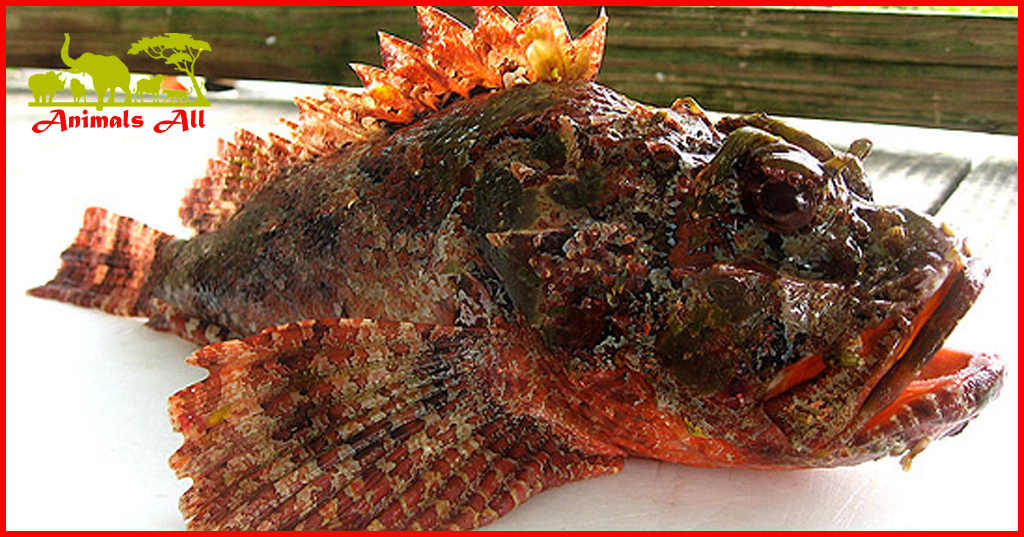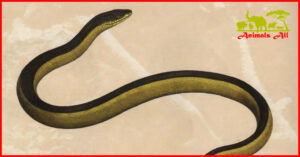
let’s know some facts about Poisonous Scorpionfish
The scorpionfish, also known as the sea scorpion, goby, or stonefish, is a species of fish in the genus Scorpionfish of the family Scorpionidae. It has an elongated, laterally flattened body, is generally 15-20 cm long, and weighs 200-500 grams. Its head is very ugly, uneven, black, and has many spines. There is a bony protrusion behind the eye socket. The body is scaleless and covered with skin flaps. The upper and lower jaw teeth are small, the dorsal fin is continuous, and the fin spines are well developed. The body is reddish brown with irregular black, red and white patches.
There are three broad brown horizontal stripes on the sides of the body, the first horizontal stripe is located at the front of the trunk, the second horizontal stripe is located behind the anus, and the third horizontal stripe is located in front and behind the base of the caudal fin; there is a large white spot below the 5th to 11th spines of the dorsal fin, the caudal fin has reddish brown horizontal stripes, and there is a broad reddish brown horizontal stripe at the base of the pectoral fin. The body of the stonefish is shaped like an elongated drop of water, with tumor-like protrusions in reddish brown, yellowish brown and other colors interwoven on it, making it look like a stone covered with seaweed, hence the name stonefish.
Poisonous scorpionfish

Poisonous scorpionfish are found in the Indian and Pacific Oceans, the South China Sea, the East China Sea, and the Taiwan Sea. Common species include the tiger scorpionfish, the ghost scorpionfish, and the poisonous scorpionfish. The scorpionfish often lives among the rocks near the coast and in the bottom waters near the coast. It often lurks in caves, reef crevices, seaweed beds or buried in the sand, feeding on small bottom-feeding carnivorous fish. The scorpionfish rarely moves. Its body shape and coloration are similar to the surrounding environment.
The sting of the scorpionfish is extremely poisonous. There is a venom gland under the spines on its head. When the scorpionfish touches the human skin, it will immediately become red and swollen, and there will be a strong numbness and pain. Some people with heart disease, high blood pressure, cerebrovascular disease, kidney and liver disease may faint due to the severe pain, and in severe cases, their lives may be endangered.
Brief description
A general term for fishes in the family Synanceiidae, order Scorpiformes, class Osteichthyes. About 30-40 cm long. Elongated and laterally flattened. The head is about the same height as the head width or slightly flattened, often with bumps and spines. The second suborbital bone extends backwards into a bony process, which is wider at the rear end. The body is scaleless and often has skin flaps. The upper and lower jaw teeth are small. The dorsal fin is continuous and the fin spines are well develop. The pectoral fins often have 1 or 2 free fin rays. There are often venom glands at the base of the head spines and fin spines, which are highly toxic. It is a warm-water or warm-temperate bottom-feeding carnivorous fish. It lives among offshore rocks and feeds on crustaceans, young fish, etc.
Scorpionfish also hides in corals and seaweeds and attacks other animals. It is distribute in tropical and subtropical waters of the Indian and Pacific Oceans. It is found in the South China Sea and the East China Sea in China. Common examples include the single-fingered tiger scorpionfish (Minous monodactylus), the ghost scorpionfish (Inimieus japonicus), the lion-headed scorpionfish (Erosa erosa), and the rose scorpionfish (Synanceia verrucosa). The spines on the fins of these scorpionfish are highly toxic, so be careful when catching them.
Appearance feature
A general term for animals of the family Synanceiidae . The scorpionfish has an extremely ugly appearance and venomous spines. Its eyes and jaw protrude, and its dorsal fin is uneven, which makes the body look uneven. There is a venomous spine on the dorsal fin
Habitat
The stonefish, also known as the stonefish , lives in the coastal waters of Australia. It is not very impressive. It is only about 30 centimeters long and likes to hide on the seabed or under reefs, disguising itself as an inconspicuous stone. Even if you stand next to a stonefish, it will not move, making it impossible for you to find it. If you accidentally step on a stonefish, it will immediately counterattack and fire deadly poison. The 12-14 needle-like dorsal spines on the back of the stonefish can easily penetrate the soles of people’s shoes and pierce the soles of their feet, causing people to be poisoned quickly and in severe pain until they die. Due to its extreme toxicity, it is listed as one of the ” Top Ten Poisons in the World “, ranking fourth.
Living habits
Poisonous scorpionfish often hide in coastal coral reefs and rocky reefs. The venom glands at the base secrete venom, which flows from the stinger to the target. They rest on the seabed or reefs, waiting for prey to approach. Their body color changes according to the surrounding environment. So they are not easy to be discover. When prey approaches, they will swallow it quickly
Distribution area
Distribution in China: Xisha Islands, Taiwan and other waters. Other distribution: Red Sea, Indian Ocean south of Africa to the central Pacific, north to Japan.
Species toxicity
The poisonous scorpionfish has well-developed venom glands in the anterior groove of its fin spines that secrete venom. The tiger scorpionfish of the same family also has venom of the same toxicity, which can cause poisoning if stung. Soon after being stung, the person may experience chills and fever, accompanied by general discomfort, nausea, vomiting, etc., and the high fever may sometimes last for several days. After the toxin is absorbed, cardiovascular damage such as palpitations, changes in heart rate, arrhythmia , myocardial ischemic damage and hypotension may occur. In severe cases, there may be shock, convulsions, delirium and difficulty breathing , and even respiratory paralysis and arrest.

